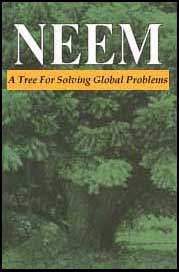
Preface[edit | edit source]
Neem is a fascinating tree. On the one hand, it seems to be one of the most promising of all plants and may eventually benefit every person on the planet. Probably no other yields as many strange and varied products or has as many exploitable by-products. Indeed, as foreseen by some scientists, this plant may usher in a new era in pest control, provide millions with inexpensive medicines, cut down the rate of human population growth, and perhaps even reduce erosion, deforestation, and the excessive temperature of an overheated globe.
On the other hand, that all remains only a vague promise. Although the enthusiasm may be justified, it is largely founded on empirical or anecdotal evidence. Our purpose here is to marshal the various facts about this little-known species, to help illuminate its future promise, and to speed realization of its potential.
The report has been produced particularly for nonspecialists such as government ministers, research directors, university students, private voluntary organizations, and entrepreneurs. It is intended as an economic development document, not a scientific monograph. We hope it will be of interest, especially to agencies engaged in development assistance and food relief; officials and institutions concerned with agriculture and forestry in tropical countries; and scientific establishments with relevant interests.
This study is a project of the Board on Science and Technology for International Development (BOSTID), a division of the National Research Council. It is one in a series of reports prepared under BOSTID's program on technology innovation. Established in 1970, this program evaluates unconventional scientific and technological advances with particular promise for solving problems of developing countries. This report continues a subseries of reports describing promising tree resources that heretofore have been neglected or overlooked. Other titles include:
- Leucaena: Promising Forage and Tree Crop in Developing Countries (1984)
- Mangium and Other Fast-Growing Acacias for the Humid Tropics (1983)
- Calliandra: A Versatile Small Tree for the Humid Tropics (1983)
- Casuarinas: Nitrogen-Fixing Trees for Adverse Sites (1983)
- Firewood Crops: Shrub and Tree Species for Energy Production, Volumes I and II (1980 and 1983, respectively)
- Sowing Forests from the Air (1981).
Funds for this project were made available by the Agency for International Development (AID). Specifically, they were contributed by AID's Office of Forestry, Environment, and Natural Resources.
How to cite this report:
National Research Council. 1992. Neem: A Tree For Solving Global
Problems. National Academy Press, Washington, D.C.